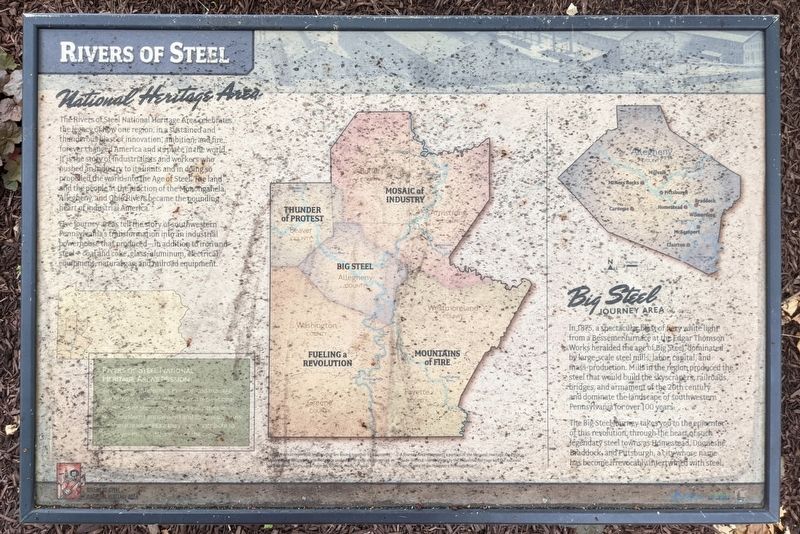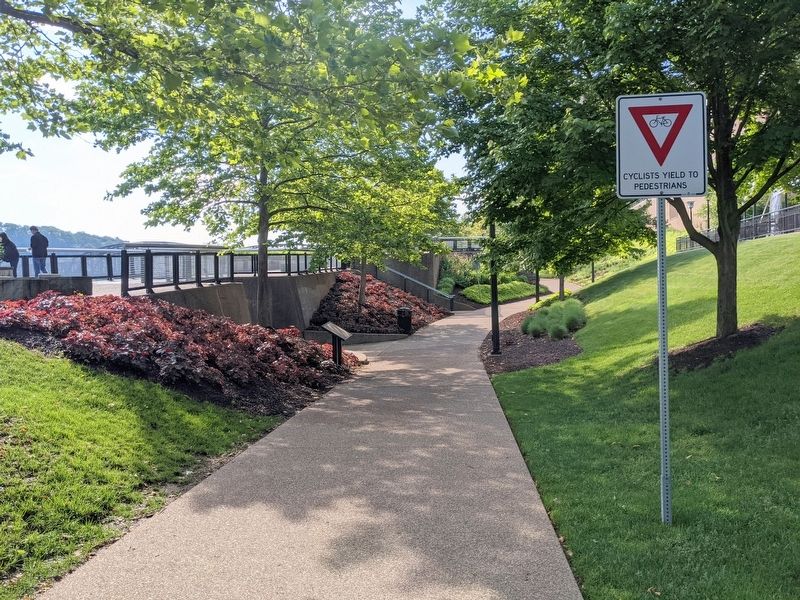Rivers of Steel
The Rivers of Steel National Heritage Area celebrates the legacy of how one region, in a sustained and thunderous blast of innovation, ambition, and fire, forever changed America and its place in the world. It is the story of industrialists and workers who pushed an industry to its limits and in doing so propelled the world into the Age of Steel. The land and the people at the intersection of the Monongahela, Allegheny, and Ohio Rivers became the pounding heart of industrial America.
Five journey areas tell the story of southwestern Pennsylvania's transformation into an industrial powerhouse that produced—in addition to iron and steel—coal and coke, glass, aluminum, electrical equipment, natural gas, and railroad equipment.
Big Steel
Journey Area
In 1875, a spectacular blast of fiery white light from a Bessemer furnace at the Edgar Thomson Works heralded the age of Big Steel, dominated by large-scale steel mills, labor, capital, and mass-production. Mills in the region produced the steel that would build the skyscrapers, railroads, bridges, and armament of the 20th century and dominate the landscape of southwestern Pennsylvania for over 100 years.
The Big Steel Journey takes you to the epicenter of this revolution, through the heart of such legendary steel towns as
Homestead, Duquesne, Braddock, and Pittsburgh, a city whose name has become irrevocably intertwined with steel.
Rivers of Steel National Heritage Area Mission
To preserve, interpret, promote, and manage the historic, cultural, natural, and recreational resources of steel and related industries in southwestern Pennsylvania and to develop uses for these resources so they may contribute to the economic revitalization of the region.
(caption)
Heritage Areas represent regions that are bound together by a common history and a distinctive sense of place unified by large-scale resources such as rivers, lakes, canal systems, historic roads or trails.
A Journey Area represents a portion of the National Heritage Area that made distinct contributions to the industrial heritage and the national significance of southwestern Pennsylvania.
Erected by Rivers of Steel National Heritage Area.
Topics. This historical marker is listed in this topic list: Industry & Commerce. A significant historical year for this entry is 1875.
Location. 40° 25.742′ N, 79° 57.851′ W. Marker is in Pittsburgh, Pennsylvania, in Allegheny County. It is in the South Side Flats. Marker is on Three Rivers Heritage Trail, 0.2 miles west of Hot Metal Bridge, on the right when traveling west
Other nearby markers. At least 8 other markers are within walking distance of this marker. Open Hearth Steel (within shouting distance of this marker); Making Steel The J&L Way (within shouting distance of this marker); The MonCon Railroad (within shouting distance of this marker); Cast Iron Columns (about 300 feet away, measured in a direct line); Materials Handling (about 300 feet away); Shaping Steel (about 400 feet away); Hub of Activity (about 500 feet away); Jones & Laughlin Steel Company (about 600 feet away). Touch for a list and map of all markers in Pittsburgh.
Credits. This page was last revised on February 2, 2023. It was originally submitted on June 2, 2021, by Bernard Fisher of Richmond, Virginia. This page has been viewed 155 times since then and 8 times this year. Photos: 1, 2. submitted on June 2, 2021, by Bernard Fisher of Richmond, Virginia.

